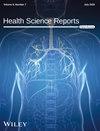Inequalities and Determinants of Quality Antenatal Care Coverage Among Women of Reproductive Age (15–49) in Tanzania: A Cross-Sectional Analysis of National Data
Abstract
Background and Aims
Maternal and neonatal mortality remain high in sub-Saharan Africa (SSA), which can be reduced by the expanded antenatal care (ANC) services intervention. Challenges exist in the quality coverage of ANC in Tanzania. We aimed to assess inequalities and determinants of quality ANC coverage among women of reproductive age (WRA, 15–49 years) in Tanzania.
Methods
We performed a secondary analysis of cross-sectional data from 6620 women of reproductive age using the 2022 Tanzania Demographic and Health Survey. Quality ANC coverage (ANCq) was measured using seven indicators, with scores ≥ 7 classified as adequate. Log-linear regression models were used to determine factors associated with ANCq using Stata version 18.0. Inequalities in ANCq by age categories, education level, socioeconomic status (SES), area of residence, and geographical zones were analyzed using WHO HEAT 3.1 through Difference and Population Attributable Risk measures.
Results
Among 6620 WRA (43%), had adequate ANCq coverage. Higher inequalities were observed among women with low education, low SES, rural residence, and living in western zones. ANCq coverage was positively associated with high SES (RR 1.35, 95% CI: 1.20–1.52), secondary/higher education (RR 1.21, 95% CI: 1.06–1.38), high media exposure (RR 1.11, 95% CI: 1.00–1.21), easy access to health facility (RR 1.11, 95% CI: 1.01–1.27), and partner's higher education (RR 1.28, 95% CI: 1.08–1.52). Inverse associations were observed among older women (35–49 years) (RR 0.89, 95% CI: 0.80–0.97) and those with higher birth order (RR 0.78, 95% CI: 0.72–0.84).
Conclusion
The study demonstrates suboptimal ANCq coverage in Tanzania, especially among disadvantaged groups, which quality ANCq having a positive association with rich wealth status, higher education level, high media exposure, health facility access, and older maternal age. Addressing these socioeconomic disparities is crucial for improving ANCq coverage and maternal and child health outcomes.


 求助内容:
求助内容: 应助结果提醒方式:
应助结果提醒方式:


